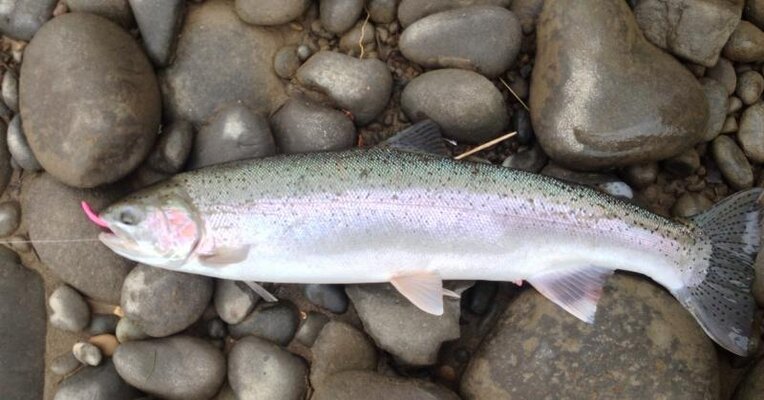H
halibuthitman
Well-known member
ok, first things first, steelhead water changes constantly, but there are constants, im gonna describe a situation that should remain a constant. 1. you walk up to a piece of water, set down your gear, look around for a high point you can stand on, a rock, log, the bank, now look at the run, just stare at it for five minutes and take in the whole landscape. our imaginary run is 60' long, 25' wide, heavy water runs down and pours into a deep run, say 15'.. very turbid and swirly at the head then halfway down slows and flows into a rock garden like you mention thats say 5' deep, then slows down to a gravel tailout and then back into 50 yards of rapids. now split that run in half starting at the first rock in the rock garden and focus on the water below that, work the closest water first this should be the visible seem of the current on your side of the river, work it all the way into the tailout always letting your gear swing all the way through the drift, now toss a couple into the heavy current then the seem on the other side.. now lets say this run has a rock or clay bank at the far side in the last 15' of the tailout.. the waters green here and you can't see the bottom but you know it isn't deep, this is the money slot, I take about half my fish of a season right there in less than 2 or 3' of water.. the fish rest here, and frequently stack.. stacked fish in shallow water are biters.. the rock garden may hold fish, the flow hight of the river will determine that daily.. the rock garden will also eat a lot of gear. Now you can go up and fish the head on both sides of the dump or shute, but your odds of keeping gear on the bottom there are low.. I almost always skip it, unless im really feeling it.
